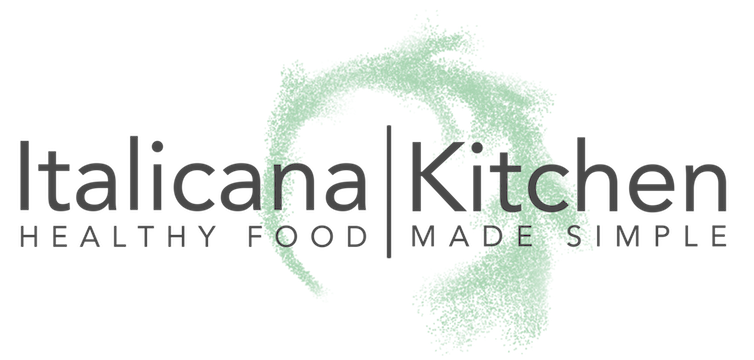HANDMADE PASTA IN ITALY
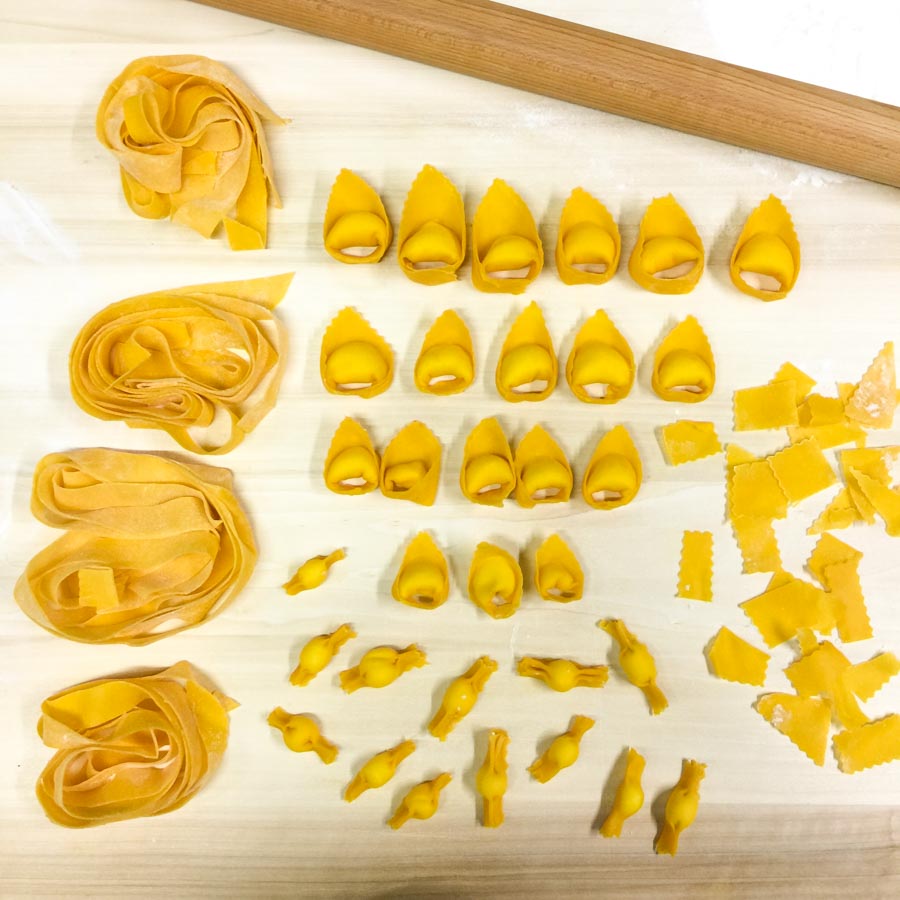 The art of making handmade pasta is an important Italian tradition. Although recipes for fresh pasta vary from region to region, (the type of flour, eggs, water, olive oil and salt are all variable elements) one commonality is that this antique practice originated in households using the simplest of ingredients and tools. Today, this tradition is waning as Italian women work outside their homes. Luckily there are many nonne, or grandmothers, who are passing down their secrets and restaurants, companies and schools that are offering pasta making courses.
The art of making handmade pasta is an important Italian tradition. Although recipes for fresh pasta vary from region to region, (the type of flour, eggs, water, olive oil and salt are all variable elements) one commonality is that this antique practice originated in households using the simplest of ingredients and tools. Today, this tradition is waning as Italian women work outside their homes. Luckily there are many nonne, or grandmothers, who are passing down their secrets and restaurants, companies and schools that are offering pasta making courses.
I recently had the opportunity to participate at a traditional pasta making course offered by La Pasta di Bologna with a sfoglina.
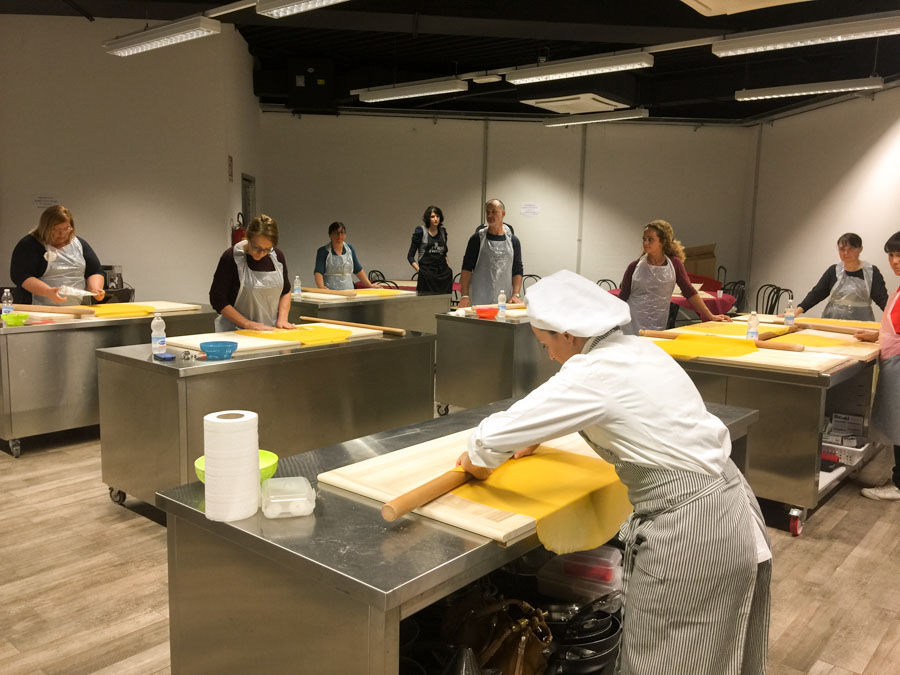 Who is a sfoglina? This is the name of a person who makes handmade pasta the traditional way by using a wooden board and rolling pin. It was a fun and educational experience. I also feel quite lucky to have an Italian mother-in-law who had already gifted me many of the tools we used in the class. They truly do make a difference for making perfect fresh pasta at home.
Who is a sfoglina? This is the name of a person who makes handmade pasta the traditional way by using a wooden board and rolling pin. It was a fun and educational experience. I also feel quite lucky to have an Italian mother-in-law who had already gifted me many of the tools we used in the class. They truly do make a difference for making perfect fresh pasta at home.
5 ESSENTIAL HAND MADE PASTA MAKING TOOLS
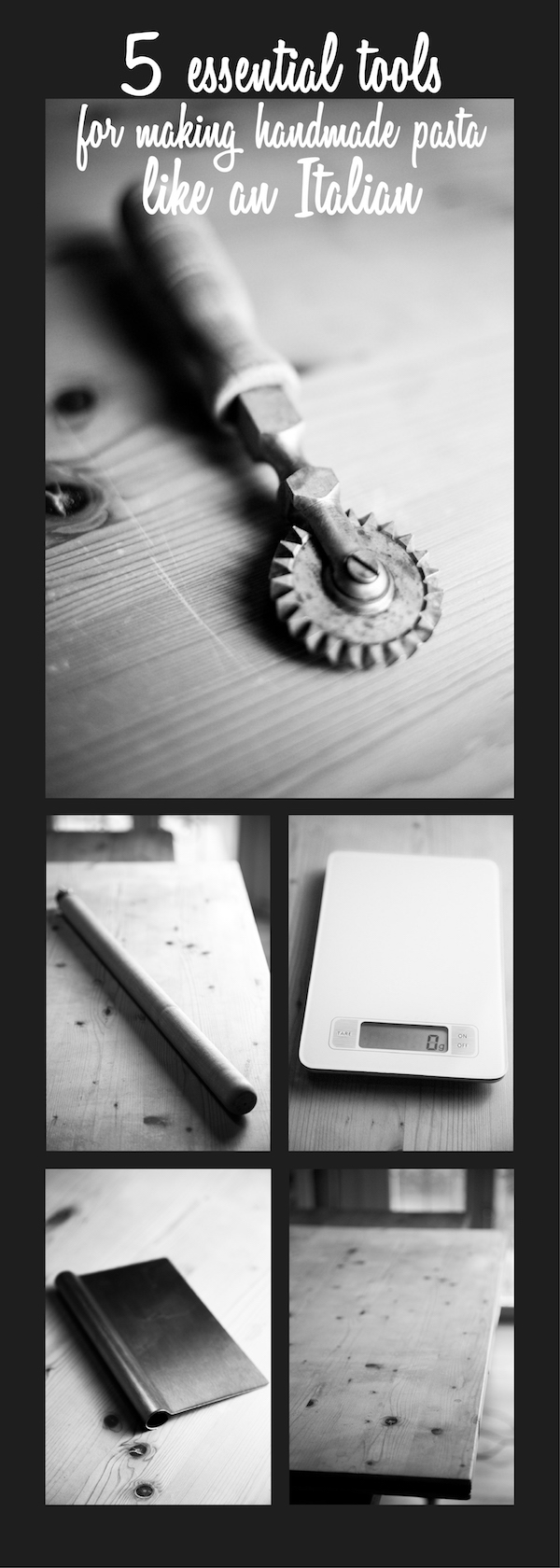 Below you’ll find the 5 essential tools to make handmade pasta like a true Italian sfoglina!
Below you’ll find the 5 essential tools to make handmade pasta like a true Italian sfoglina!
1. WOODEN BOARD
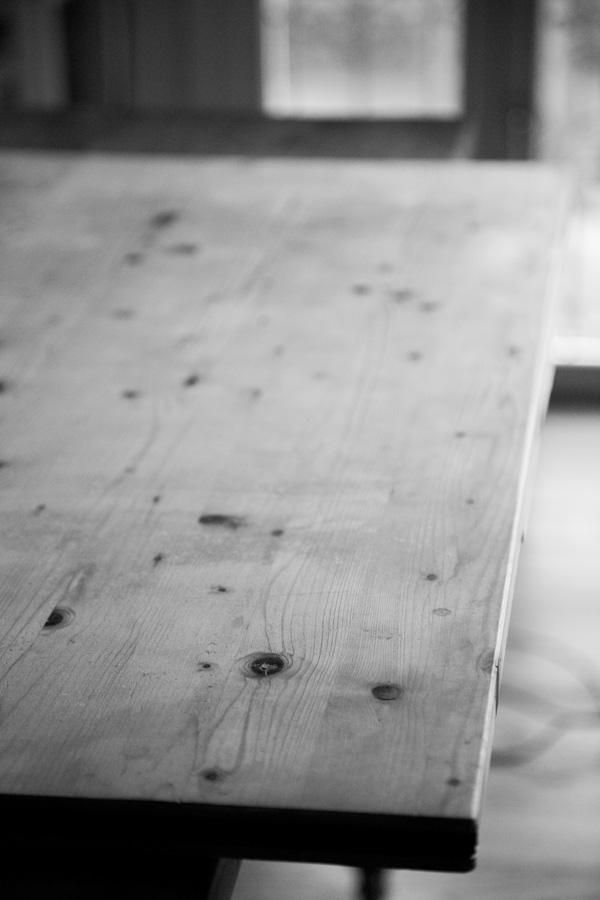 Although you can use a large clean work space, if you want to make pasta like a sfoglina, you’ll want to get a wooden board that is roughly 35/40 x 23/27 inches. This will give you ample space to roll out your dough, cut it into shapes and let your pasta dry. Using a wooden board is also practical, as cleanup is quick and easy and you don’t have to worry about damaging your countertop when you cut your pasta.
Although you can use a large clean work space, if you want to make pasta like a sfoglina, you’ll want to get a wooden board that is roughly 35/40 x 23/27 inches. This will give you ample space to roll out your dough, cut it into shapes and let your pasta dry. Using a wooden board is also practical, as cleanup is quick and easy and you don’t have to worry about damaging your countertop when you cut your pasta.
2. ROLLING PIN
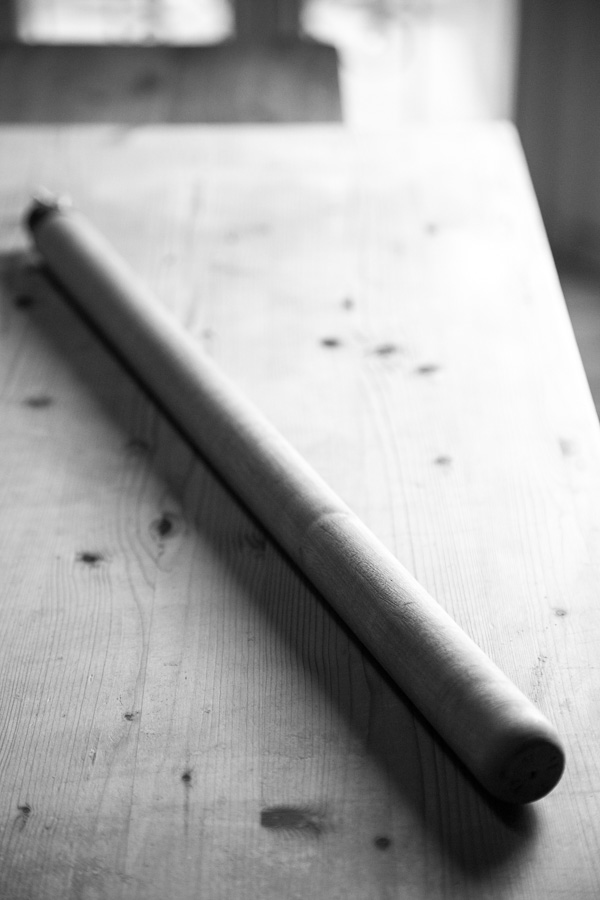 In my American kitchen, I always used a rolling pin with two handles, now I can’t live without my Emilian-style rolling pin. In Italy, I use the one that my Italian mother-in-law gave me, but when I travel to the states for cooking classes, I simply head to the hardware store and get a dowel that is about 30/35 inches long with a 1.5/2 inch diameter. I sand it down, give it a good wash and I have the best DYI rolling pin for a fraction of the cost of purchasing one in a culinary store. A handleless rolling pin really makes a difference. I find that it is nearly impossible to use a rolling pin with handles as the dough gets stuck between the pin and the handles and I can’t easily roll up and flip my dough over on the other side.
In my American kitchen, I always used a rolling pin with two handles, now I can’t live without my Emilian-style rolling pin. In Italy, I use the one that my Italian mother-in-law gave me, but when I travel to the states for cooking classes, I simply head to the hardware store and get a dowel that is about 30/35 inches long with a 1.5/2 inch diameter. I sand it down, give it a good wash and I have the best DYI rolling pin for a fraction of the cost of purchasing one in a culinary store. A handleless rolling pin really makes a difference. I find that it is nearly impossible to use a rolling pin with handles as the dough gets stuck between the pin and the handles and I can’t easily roll up and flip my dough over on the other side.
3. KITCHEN SCALE
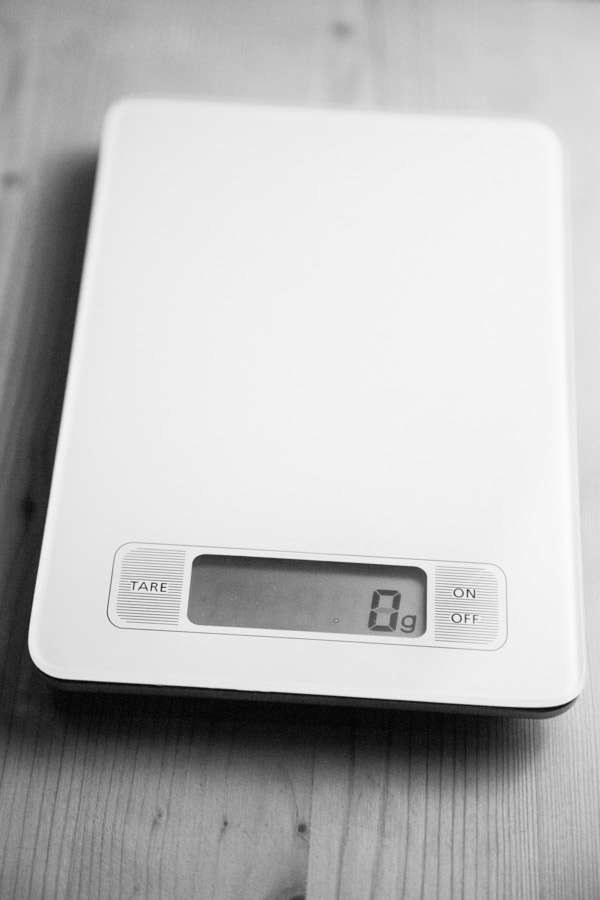 I sometimes wonder how I ever cooked without a kitchen scale. This is one item that I often pack with me in my suitcase when I travel so I am sure I have it (I’m not joking either. Mr. Italicano jokes with me that someday I’ll start bringing it to bed with me!) What’s so great about a kitchen scale? It’s precise. In flour-based recipes it makes a huge difference because each flour has a different weight depending on the type of flour, the brand and how it was milled. If you need precise amounts, don’t use measuring cups as it will give you different results each time. Try this little trick for yourself: measure a cup of flour using the spoon and sweep method, then do it again, weighing after each. You’ll most likely end up with two different weights. Now repeat using the scoop and sweep method—you’ll have even a bigger difference in weight as this method packs down more flour and you’ll end up with a whole lot more flour even if it’s still “1 cup”. With a scale, 100g of flour is always 100g of flour. For egg pasta dough, the classic recipe is 100g of flour to one egg that is approximately 60-70g in weight. This is the right ratio of dry to liquid to give you the perfect pasta dough.
I sometimes wonder how I ever cooked without a kitchen scale. This is one item that I often pack with me in my suitcase when I travel so I am sure I have it (I’m not joking either. Mr. Italicano jokes with me that someday I’ll start bringing it to bed with me!) What’s so great about a kitchen scale? It’s precise. In flour-based recipes it makes a huge difference because each flour has a different weight depending on the type of flour, the brand and how it was milled. If you need precise amounts, don’t use measuring cups as it will give you different results each time. Try this little trick for yourself: measure a cup of flour using the spoon and sweep method, then do it again, weighing after each. You’ll most likely end up with two different weights. Now repeat using the scoop and sweep method—you’ll have even a bigger difference in weight as this method packs down more flour and you’ll end up with a whole lot more flour even if it’s still “1 cup”. With a scale, 100g of flour is always 100g of flour. For egg pasta dough, the classic recipe is 100g of flour to one egg that is approximately 60-70g in weight. This is the right ratio of dry to liquid to give you the perfect pasta dough.
4. DOUGH SCRAPER
 This is a handy tool to have when making pasta dough (and any dough for that matter) as you can easily work the wet and loose dough at the beginning without getting your hands messy before you knead the dough. It’s also a lifesaver to scrape up any flour/egg gunk from the board before rolling out the dough. You don’t want any bits or tears in your dough.
This is a handy tool to have when making pasta dough (and any dough for that matter) as you can easily work the wet and loose dough at the beginning without getting your hands messy before you knead the dough. It’s also a lifesaver to scrape up any flour/egg gunk from the board before rolling out the dough. You don’t want any bits or tears in your dough.
5. PASTRY CUTTER, KNIFE, AND TRADITIONAL EQUIPMENT
 Straight and fluted pastry cutters are great for tortelli, cappelletti, ravioli and other stuffed pasta.You’ll need a sharp knife for shapes like tagliolini, tagliatelle, pappardelle, and lasagne sheets. Some traditional shapes even require specific tools; for instance, to make garganelli, you’ll its unique stick and comb.
Straight and fluted pastry cutters are great for tortelli, cappelletti, ravioli and other stuffed pasta.You’ll need a sharp knife for shapes like tagliolini, tagliatelle, pappardelle, and lasagne sheets. Some traditional shapes even require specific tools; for instance, to make garganelli, you’ll its unique stick and comb.
Although I typically make homemade pasta using a stand mixer and pasta attachments {<—affiliate links}, I do appreciate the art of making pasta the traditional way with just a rolling pin and board. And, I absolutely love taking pasta making classes as a social event to meet new people, learn new tricks, and of course eat good handmade food. 🙂
